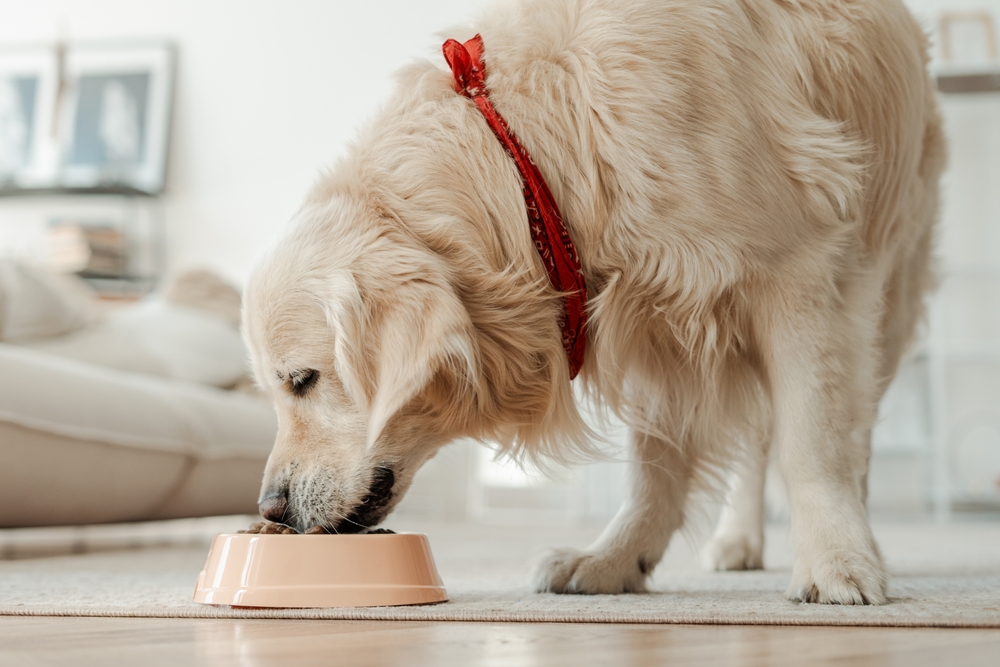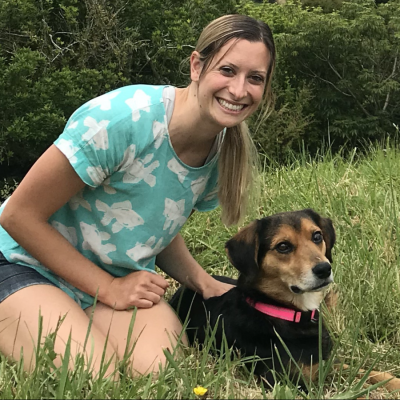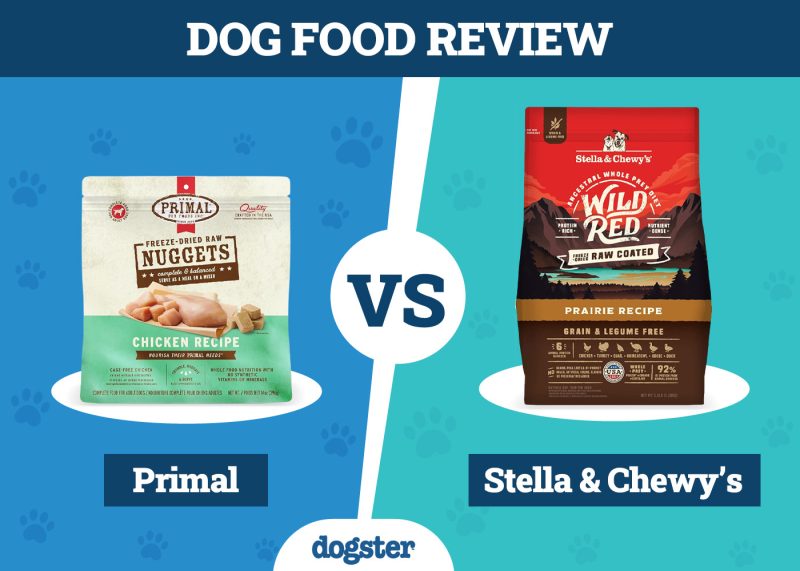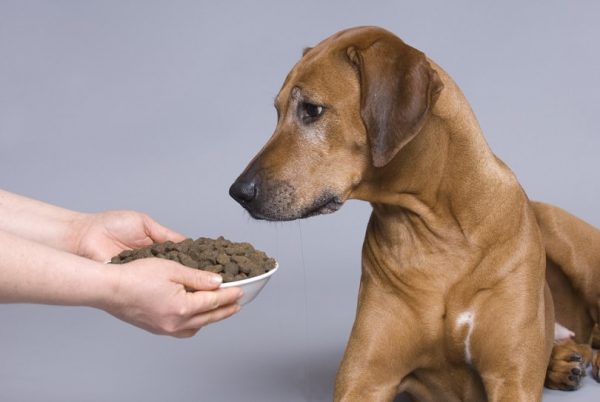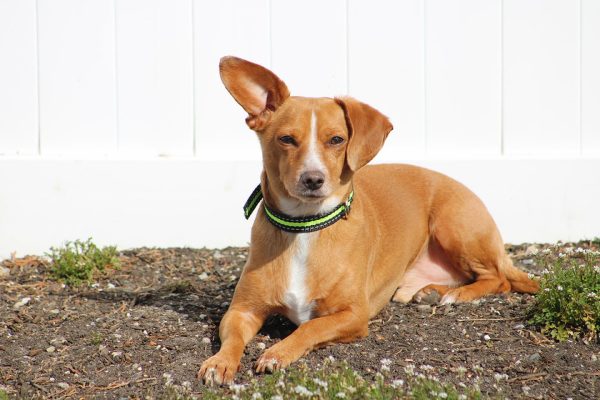In this article
In addition to determining how much to feed your dog, establishing a feeding schedule can also be very beneficial. This means feeding your dog at roughly the same time every day, according to how many meals they need and how much you need to feed.
Starting a feeding schedule when your pup is a puppy means you both get into a positive routine. It can help with potty training, control picky eating, and better enable you to measure and control how much you feed every day. However, like feeding amount, a feeding schedule needs to be based on several factors, the most important being the age of your dog.
Below, we look at suitable dog feeding schedules by age, for puppies, adults, and senior dogs. You can tailor these to suit your work or daily timetable, but they provide a good basis to start.

How Much Should My Dog Eat?
How much dogs will eat is highly dependent on the type of food offered and their age, health status, and activity level. When you select a food, look for something AAFCO (Association of American Food Control Officials) approved for your pet’s life stage; that is, whether they are an adult, puppy, or pregnant/lactating.1 Generally, these foods will give a feeding guide, but remember this is just a guide and adjustments may have to be made if your pet loses or gains condition. Use a body condition score chart to determine if your dog is over or under-nourished.
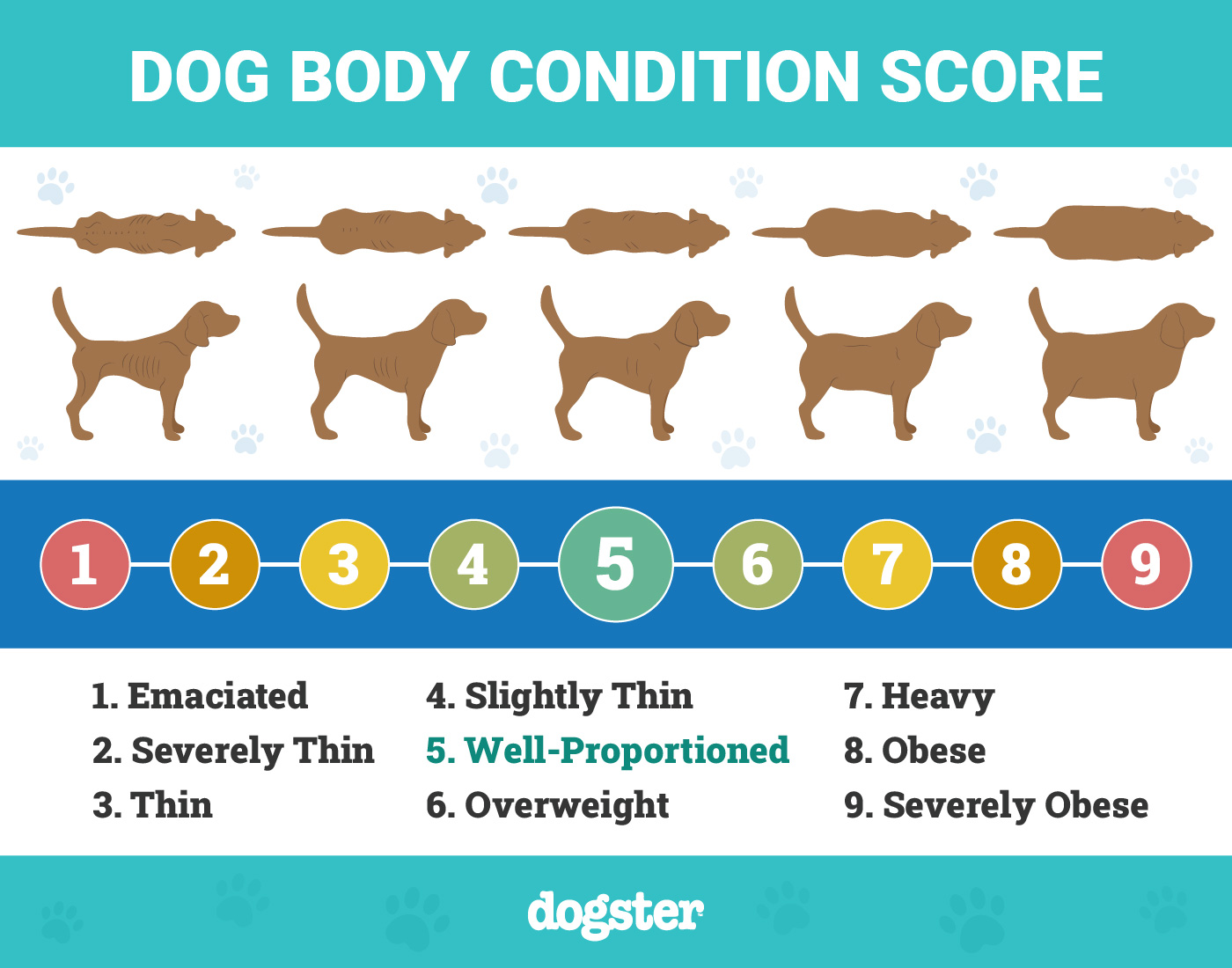
Puppy Feeding Schedule
Setting a feeding schedule not only ensures that you spread the total feed amount over the whole day but also gets you and your puppy into the habit of feeding on time, and it can help with house training. The younger the puppy, the more often they will need feeding. The schedule below gives feeding frequency and an approximate timetable you can follow.
| Age | Meals per Day | Meal 1 | Meal 2 | Meal 3 | Meal 4 |
| 8–12 weeks | 4 | 8:00 AM | 12:00 AM | 4:00 PM | 8:00 PM |
| 3–6 months | 3 | 8:00 AM | 2:00 PM | 8:00 PM | |
| 6 months+ | 2 | 8:00 AM | 8:00 PM |
Dogs are given puppy food, which contains more calories than adult food and essential vitamins and minerals that are important to the young dog’s developing body until they reach around 90% of their full adult body weight. In most cases, this means changing from puppy to adult food when your dog is about 12 months old or when your vet recommends it. Generally, their calorie requirements will also drop after spaying or neutering.
A feeding schedule can help with toilet training. A young puppy will generally need to poop about 15 minutes after eating, but it could be as little as 5 minutes or as long as 30 minutes after. By feeding on a schedule, you can be ready to take your young dog outside when they need to poop, avoiding accidents indoors and allowing you to praise appropriate toileting behavior.

Adult Dog Feeding Schedule
Adult dogs do not need to eat as often as young puppies, but they tend to do best when their daily food allowance is split between two meals. Alternatively, you can feed three meals a day, with the following offering a reasonable schedule for meals. If you do feed three meals a day, it can be a good idea to spread the meals out over a longer period.
| Age | Meals per Day | Meal 1 | Meal 2 | Meal 3 |
| Adult | 2 | 8:00 AM | 8:00 PM | |
| Adult | 3 | 8:00 AM | 1:00 PM | 8:00 PM |
Adults will often poop around 30 minutes after eating or when they wake up. They may also choose to poop when out walking.
Senior Dog Feeding Schedule
Senior dogs can be fed on the same schedule as adult dogs, but some do better with smaller meals fed more frequently. As such, you can feed two or three meals a day using the same schedule as above.
We recommend getting advice from a veterinarian if you have any questions or concerns regarding your pet’s diet.
If you need to speak with a vet but can't get to one, head over to PangoVet. It's our online service where you can talk to a vet online and get the personalized advice you need for your pet — all at an affordable price!


The Benefits of Dog Feeding on a Schedule
It can be a struggle for some owners to stick to a strict schedule. If your work shifts change regularly, or you have commitments on certain days of the week, for example, it is challenging to stick to the same time every time. Feeding on a set schedule might seem like a big commitment, but it does offer benefits over free-feeding or basing it on your own mealtimes and schedule.
- Gain Control of Their Diet – By feeding on a schedule, it is easier to manage how much you are feeding. You avoid accidentally feeding too many or too few meals in a day, and you can weigh a half, third, or quarter of your dog’s daily diet out at each meal. Portion control is important because too little food can lead to malnutrition or deficiencies in certain vitamins and minerals, while overfeeding can cause your dog to gain too much weight or become obese.
- Help Potty Train Puppies – Dogs are creatures of habit, and they prefer to have schedules for most things. They will typically wake up and go to sleep at the same time. They will also tend to poop at similar times and will expect to be walked and let out in the yard at the same time. Most dogs will need to go to the toilet during or immediately after walks, as well as about 30 minutes after a meal. Puppies may need to be let out sooner than this, and by controlling when you feed your puppy, you can also get into an effective toileting routine.
- Help Prevent Picky Eating – Feeding a daily schedule means your dog will expect their meals at certain times. They will naturally be more hungry at mealtimes and will be more likely to eat the food you put down, knowing they will have to wait until their next meal. If you have a picky eater, try feeding to a schedule. It can help eliminate pickiness.

Should You Feed Treats?
Sometimes it’s nice to give your dog a treat. Treats can be an effective tool in dog training. They can be given as a reward in positive reinforcement training techniques. Treats, however, should only make up 10% of a dog’s daily calorie intake and you should adjust the amount of food you feed each day according to the calories in treats you give.
The exact amount of calories an individual animal needs to maintain a healthy weight is variable and influenced by many factors including genetics, age, breed, and activity level. This tool is meant to be used only as a guideline for healthy individuals and does not substitute veterinary advice
Are Set Meal Times Better Than Free Feeding?
It is generally agreed that scheduled feeding is better than free feeding. If you do free-feed your dog, you will need to weigh food out in the morning and consider staggering its release. Otherwise, if you put all of your dog’s daily food allowance out in the morning, your pup may have finished it all by mid-afternoon, and you can’t starve them for the rest of the day and night.
It can also lead to resource guarding if your four-legged friend feels they need to protect the food that is always in their bowl. Feeding set meals means you can stagger food access across the day, more easily manage the amount you feed, and because your dog will likely eat all of their food as soon as it is put out, they won’t feel the need to guard.

Conclusion
A regular dog feeding schedule can be beneficial for you and your dog. It helps prevent overeating and can potentially stop protective or aggressive feeding activity. As well as ensuring you feed the right amount each day, you will need to determine how many meals to give. Puppies need three or four meals a day while adults usually benefit from two or three meals a day, fed at the same times each day.
You might also want to check out:
Featured Image Credit: AYO Production, Shutterstock
